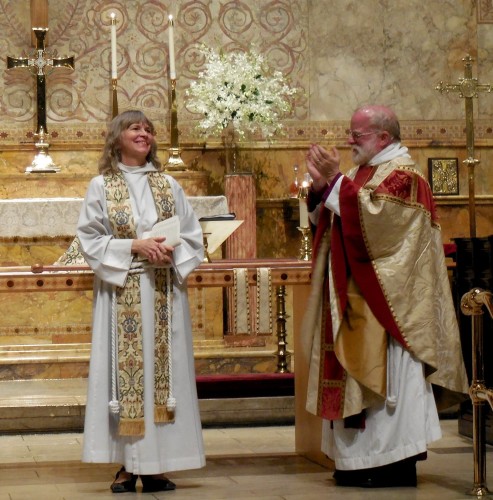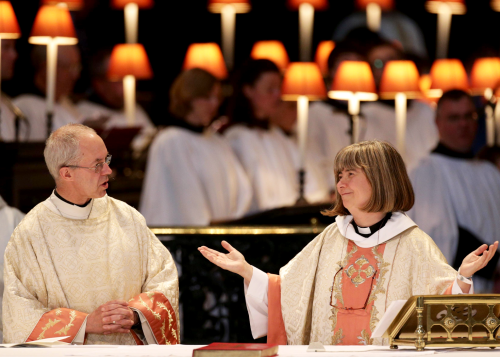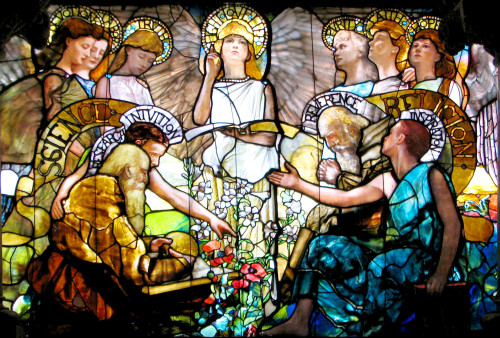- Home
- Ancient Church
- Ancient Church – Introduction
Ancient Apostolic Church:
The 12th century Pontificate of 1st century Ancient Christianity:
Tradition without Dogma – Unity with Independence – Diversity with Direction


Pontifical authority with independent statehood as a sovereign subject of international law in official diplomatic relations backed by 5+ Vatican Papal Bulls
The Ancient Apostolic Church embodies the canonical denomination of Ancient Catholicism, possessing its own inherent Pontifical authority. Ancient Catholicism is the primary and original denomination, which is the earliest pre-Christian source of all classical Christianity. This most sacred tradition survived through the Biblical Ancient Priesthood of Solomon, which was recovered and restored by the chivalric Order of the Temple of Solomon in the 12th century, and again by legitimate successors to the Knights Templar in the 21st century.
The Ancient Apostolic Church, continuing the Priesthood of the Biblical Solomon, is the autonomous ecclesiastical institution preserved and supported by the Templar Order, providing a canonical 1st – 12th century classical Church experience.
Unifying Source of Old Catholicism & Liberal Catholicism


The Templar denomination of Ancient Catholicism is historically and canonically the only Pontifical Catholicate which unifies and represents the 12th century Independent Church Movement, the derivative 19th century Old Catholic Movement and Reformed Catholic Movement, and the resulting early 20th century Liberal Catholic Movement:
Following the precedent of the Vatican grant of sovereignty to the Templar Order (based on ecclesiastical authority of the Ancient Priesthood of Solomon) in 1139 AD, the “Independent Church Movement” was created only six years later in 1145 AD by Pope Eugene III. It was established in Utrecht as a sovereign possession of the Teutonic Knights [2] as a branch of the Knights Templar [3], as part of the Templar missions of Saint Bernard de Clairvaux [4] [5] who had sponsored the founding Templar mission to recover the Ancient Priesthood of Solomon [6]. The Independent Church Movement was solidified in 1520 AD under Philip of Burgundy, the Bishop of Utrecht, who was a Teutonic Knight and a leader of cultural Templarism [7].
The Independent Church Movement, led by Independent Bishops of cultural Templarism, created the “Old Catholic Movement” in 1870 AD, ratified by the Old Catholic Congress in 1871 AD, which declares “Adherence to the Ancient Catholic faith… of the Ancient Church” [8]. This was solidified by the Declaration of Utrecht in 1889 AD, which specifically recognizes the “historical primacy… of the Ancient Church” (Article 2) and “Ancient Catholic doctrine” (Article 6) [9]. For these reasons, the Old Catholic Movement is often interchangeably referred to by many scholars as the “Ancient Catholic Movement”, confirming its original foundations in the 12th century Templar denomination of Ancient Catholicism.
The “Reformed Catholic Movement” was established in 1879 AD by the Irish Roman Catholic Bishop James O’Connor, with a group of Clergy who left the Vatican to be Independent Bishops. The Reformed movement embodies traditional Catholic practices, characterized by some Protestant and Evangelical doctrines of direct communion through the Holy Spirit [10].
The Liberal Catholic Movement was established in 1916 AD by Archbishop Arnold Harris Mathew (Roman Catholic Priest, made Doctor of Divinity by Pope Pius IX, first Old Catholic Bishop of Great Britain in 1908 AD), Bishop James Ingall Wedgewood (British Anglican, Sorbonne doctoral scholar) and Bishop Charles Webster Leadbeater (British Anglican Priest). As a revival of the ancient Egyptian sacred wisdom underlying Christianity, it was primarily inspired by the Ancient Catholicism of Templar heritage. The Liberal Catholic Movement is the most widely recognized tradition within Old Catholicism [11].
While isolated Churches of the Old Catholic, Reformed Catholic and Liberal Catholic movements have a tendency to be schismatic, the Ancient Apostolic Church serves as the unifying denomination, by providing the 12th century foundations of the original underlying Independent Church Movement. The Pontificate thus provides the stability for all schisms to be reconciled, and all apparent differences to be resolved, through the most ancient and timeless doctrines of 1st century Ancient Catholicism, as restored and preserved by the Templar Order.
Inclusiveness of Ancient Catholicism


Installation of Reverend Mother Elizabeth Maxwell as Rector of the Church of the Ascension in New York City (13 May 2015)



The word “Catholic” is from the Latin ‘Catholicus‘, which actually means “Universal”, in the sense of being the “general” foundation for otherwise diverse groups. The word “Catholic” was first applied to the Holy See of the Church of Rome ca. 1554 AD. [12] Prior to that 16th century Vatican usage, the concept of “Catholic” was a basic mission of the 1st century Ancient Church: The Apostles taught the first Churches “to keep the unity of the Spirit… till we all come in the unity of the Faith… that we henceforth be no more [distracted], tossed to and fro, and carried about with every wind of doctrine” (Ephesians 4:1-16) [13].
Because the Ancient Priesthood of Solomon includes the direct origins of many practices which are particular to Roman Catholicism, this early Christian denomination is properly called Ancient Catholicism. As it predates all later derivative doctrines which developed after the 1st century, while it contains much of the elegance, scholarship and formality of Catholic tradition, it is completely free from any and all “dogmas”.
Because the Ancient Priesthood of Solomon continued through the Essenes to be practiced and taught by Jesus to the Apostles, it organically consists of the underlying foundations of all Christian denominations. As a result, Ancient Catholicism is compatible with all denominations of Christianity, thus making it – quite ironically – a “non-denominational” denomination.
Because of the great antiquity of the Ancient Priesthood of Solomon, it preserves the most universal doctrines which are the cornerstones of all genuine spiritual religions. Accordingly, the denomination of Ancient Catholicism is generally compatible with all major world religions, giving it a strong basis for interfaith ecumenical cooperation, while preserving the distinct respective heritage of all historical traditions.
In accordance with the Roman Catholic Code of Canon Law of 1983, the Ancient Catholic denomination incorporates “immemorial customs” from the ancient roots of Christianity, and “centennial customs” of all derivative Christian denominations (Canon 26), which cannot be revoked (Canon 28) as long as they are “reasonable” (Canon 24, §2); Canon law also guarantees freedom of liturgy and “the right to follow their own form of spiritual life” within the Pontifical Catholicate (Canon 214). [14]
Therefore, all Churches and Faithful of various denominations, whether Old Catholic, Reformed Catholic, Liberal Catholic, Protestant, Pentecostal, Evangelical, Episcopalian, Celtic, Gnostic, or otherwise, can fully participate in the religious life of the Ancient Apostolic Church: Clergy and practicing Faithful can choose the liturgies and prayers of their personal preference and inspiration; Churches of various denominations can be accepted into Full Communion with the Pontificate, while preserving their autonomy.
Supporting and representing an interdenominational membership of autonomous Churches in Communion, the primary role of the Ancient Apostolic Church is to restore and provide the underlying doctrines as educational sermons, seminary studies, ancient and classical liturgies for optional use, to strengthen and deepen the experience of Faith itself, in all participating denominations.
In practice, the inclusiveness of the Ancient Apostolic Church allows the experience of enjoying a balanced combination of the comfort of ceremonial sacraments with the inspiration of evangelical sermons.
Promoting ecumenical unification while preserving multidenominational independence, the Ancient Apostolic Church provides deeper dimensions of the true experience of Faith, through the most ancient original doctrines of early Christianity, which are the timeless foundations to rediscover an unshakeable Faith.
Traditional Doctrines of Diversity in Faith


The Archbishop of Canterbury Justin celebrates 20 years of Women in the Priesthood of the Church of England (2014)


Ancient Catholicism is the most tolerant, diverse and inclusive denomination of classical Christianity. While preserving its own unique and distinct traditions since ancient times, it accommodates many practices which are considered “liberal” in the modern era. However, the apparent “liberalism” of the Ancient Apostolic Church is not from any compromise of traditional doctrines. Rather, this comes from a deeper understanding, supported by facts of the historical record, that the original doctrines of early 1st century Christianity are in fact much more inclusive than has been generally known.
All doctrines and practices of Ancient Catholicism are directly rooted in Biblical Scripture, interpreted in the context of verified historical facts of the original practice of Christianity as taught by Jesus the Nazarene, as clarified and supported by academic archaeology.
Women Equal in All Levels of Clergy – Women hold full and equal status in the Ancient Catholic Clergy, at all levels, and are canonically consecrated as Bishops (Genesis 1:26-28; Mark 15:40-41; Acts 1:14; Romans 16:1; I Corinthians 11:8-12) [15].
Married Priests: Celibacy Not Required – Married Priests are accepted and encouraged. While voluntary celibacy is respected and has recognized advantages, Clergy are not expected to be celibate (Genesis 2:18; I Corinthians 7:1-2, 7:5). In scripture, Priests are not expected to be above nor without worldly entanglements (including marriage), specifically as life experience to be better Priests (Hebrews 5:1-2; Ephesians 3:7-8). The Apostles explicitly wrote that both Deacons and Bishops were actually strongly encouraged to be married and the head of a family, which was considered to give qualifying skills beneficial to managing the Church (I Timothy 3:12, 3:2-5; Titus 1:5-9) [16].
Divorce & Remarriage Permitted – Divorce is discouraged but permitted (Matthew 5:31, 19:8), and remarriage is supported and encouraged, as a fundamental God-given right of companionship (Genesis 2:18-24; Matthew 19:4-6) [17].
Open Communion for All Seekers – Open communion is practiced, such that all spiritual seekers who are interested, whether from other denominations or even from other religions, are welcome to participate in all fellowship, rites and sacraments of the Church (Acts 2:44-47; I John 1:3-7) [18].


‘Education’ Louis Tiffany Window (1890 AD), at Yale University, portraying Science & Religion in harmony
Science & Religion Together – Science and religion are considered to be not only compatible, but actually interdependent, because scripture confirms that the physical universe is a rational, ordered universe of nature, created by God by intelligent design (Job 38:4-5; Isaiah 40:12; Psalm 19:1-4) [19]. Accordingly, exploring the esoteric mechanics of that universe through empirical science serves to reveal the glory of God (Psalm 111:2-4; Ecclesiastes 1:13-17; Romans 1:19-20) [20]. Moreover, God is the source of all learning, knowledge, understanding and wisdom, including science (Daniel 1:17, 2:21; I Kings 4:29) [21]. Jesus himself taught that it is necessary to understand the principles of science, in order to appreciate the intelligent design of the kingdom of God (John 3:12) [22].
Freedom of Liturgical and Cultural Preference – Churches in communion with the Ancient Apostolic Church enjoy independence and freedom of liturgy, thus promoting diversity of many socio-cultural approaches to Catholic Christianity from differing historical traditions. Jesus taught that whenever Bishops “shall agree on earth” on the form or substance of any prayer, “it shall be done for them… in heaven” (Matthew 18:19), and that prayers are made effective by the faith in one’s heart, not the form of words (Mark 11:24) [23]. The Apostles taught that Priests minister by the spirit, not the letter, of the Gospel (II Corinthians 3:6), and that prayers are made effective by the Holy Spirit, even when we cannot find adequate words (Romans 8:26-27) [24]. This doctrine of “intent over form”, and thus freedom of liturgy, is confirmed in traditional Canon law (Canon 214) [25].
Suggested Topics Related to this Information
Click for details about Membership & Participation in the Ancient Apostolic Church.
Click for details of the Apostolic Succession Lines within Ancient Catholicism.
Click for a full report on the Ancient Apostolic Denomination of the Templars.
Academic Source References
[1] Congregation for the Doctrine of the Faith, Dominus Iesus: On the Unicity and Salvific Universality of Jesus Christ and the Church, Holy See of the Roman Catholic Church, published by Pope John Paul II (16 June 2000), republished by Pope Benedict XVI (August 2000), Article IV, Section 17.
[2] The Vatican, The Catholic Encyclopedia (1912), The Encyclopedia Press, New York (1913), Volume 14, “Teutonic Order”, p.542.
[3] The Vatican, The Catholic Encyclopedia (1912), The Encyclopedia Press, New York (1913), Volume 14, “Teutonic Order”, p.541.
[4] Michael Horn, Studien zur Geschichte Papst Eugens III (1145-1153), Peter Lang Verlag (1992), pp.36-40, pp.42-45.
[5] Saint Bernard de Clairvaux, On Consideration, Letter to Pope Eugene III, Translated in: George Lewis, Saint Bernard: On Consideration, Oxford Library of Translations, Clarendon Press, Oxford (1908).
[6] Michael Lamy, Les Templiers: Ces Grand Seigneurs aux Blancs Manteaux, Auberon (1994), Bordeaux (1997), p.28.
[7] Louis Sicking, Zeemacht en Onmacht: Maritieme Politiek in de Nederlanden 1488-1558, De Bataafse Leeuw, Amsterdam (1998).
[8] The Vatican, The Catholic Encyclopedia (1911), The Encyclopedia Press, New York (1913), Volume 11, “Old Catholics”, p.235: “Adherence to the Ancient Catholic faith… of the Ancient Church”.
[9] Union of Utrecht of Old Catholic Churches, The Declaration of Utrecht (24 September 1889), Translated in: Paul Halsall, Modern History Sourcebook, Fordham University, New York (1999): Continuing the 1st century “primitive Church” as the original “undivided Church” (Articles 1, 4, 5, 7, 8); Recognizing the “historical primacy… of the Ancient Church” (Article 2) and “Ancient Catholic doctrine” (Article 6).
[10] Rev. Philip Schaff (Editor), New Schaff-Herzog Encyclopedia of Religious Knowledge, 3rd Edition, Funk and Wagnalls Publishers, London (1914), Volume 9, “Reformed Catholics”; H.K. Carroll, Religious Forces of the United States, New York (1896), pp.82-83.
[11] William J. Whalen, Separated Brethren: A Survey of Protestant, Anglican, Eastern Orthodox and Other Denominations in the United States, 3rd Revised Edition, Our Sunday Visitor, Inc. (1979), p.153.
[12] Douglas Harper, Online Etymology Dictionary (2014), “Catholic (adj.)”.
[13] New Testament, Authorized King James Version (AKJV), Cambridge University Press (1990), Ephesians 4:1-16.
[14] The Vatican, The Code of Canon Law: Apostolic Constitution, Second Ecumenical Council (“Vatican II”), Enacted (1965), Amended and ratified by Pope John Paul II, Holy See of Rome (1983): “immemorial customs”, “centennial customs” (Canon 26); irrevocable (Canon 28) as long as “reasonable” (Canon 24, §2); “right to follow their own form of spiritual life” (Canon 214).
[15] The Holy Bible, Authorized King James Version (AKJV), Cambridge University Press (1990): God gave men and women both dominion, equally and jointly together, not separately: “Let them have dominion… male and female… and God said unto them… have dominion” (Genesis 1:26-28); “Mary Magdalene… followed him [Jesus] and ministered unto him.” (Mark 15:40-41); “These all continued with one accord in prayer and supplication, with the women” (Acts 1:14); Apostle Paul: “I commend to you our sister Phoebe, a Deacon of the Church” as an Apostolic delegate (Romans 16:1); “For this cause ought the woman to have power on her head because of the Angels. … neither is the man without the woman, neither the woman without the man, in the Lord… but all things of God.” (I Corinthians 11:8-12).
[16] The Holy Bible, Authorized King James Version (AKJV), Cambridge University Press (1990): “God said, It is not good that the man should be alone” (Genesis 2:18); “It is good for a man not to touch a woman. Nevertheless, to avoid fornication, let every man have his own wife, and let every woman have her own husband.” (I Corinthians 7:1-2); “Do not deprive one another except perhaps… for a set time, to devote yourselves to prayer” (I Corinthians 7:5); “For every High Priest… is ordained for men in things pertaining to God, that he… can have compassion… for that he himself is compassed with infirmity” (Hebrews 5:1-2); Apostle Paul: “I was made a minister [Bishop]… Unto me, who am less than the least of all Saints… that I should preach.” (Ephesians 3:7-8); “Let the Deacons be the husbands of one wife, ruling their… own houses well.” (I Timothy 3:12); “A Bishop then must be blameless, the husband of one wife… one that ruleth well his own house… for if a man know not how to rule his own house, how shall he take care of the Church of God?” (I Timothy 3:2-5); “Ordain Elders [Bishops]… if any be blameless, the husband of one wife… For a Bishop must be… able by sound doctrine… to convince the gainsayers.” (Titus 1:5-9).
[17] The Holy Bible, Authorized King James Version (AKJV), Cambridge University Press (1990): “It hath been said, Whosoever shall put away his wife, let him give her a writing of divorcement” (Matthew 5:31); “Moses because of the hardness of your hearts suffered you to put away your wives: but from the beginning it was not so.” (Matthew 19:8); “God said, It is not good that the man should be alone; I will make [for] him… a woman” (Genesis 2:18-24); “[God] at the beginning made them male and female… Wherefore they are no more twain, but one flesh.” (Matthew 19:4-6).
[18] New Testament, Authorized King James Version (AKJV), Cambridge University Press (1990): “And all that believed… parted them to all men, as every man had need… breaking bread from house to house… praising God, and having favour with all the people.” (Acts 2:44-47); “That which we have seen and heard declare we unto you, that ye also may have fellowship with us… that your joy may be full. … We have fellowship one with another, and the [Eucharist] cleanseth us from all sin.” (I John 1:3-7).
[19] Old Testament, Authorized King James Version (AKJV), Cambridge University Press (1990): God “laid the foundations of the earth” with “measures” (Job 38:4-5), and “meted out heaven” with “measure” (Isaiah 40:12). As a result, “The heavens declare the glory of God; and the firmament showeth his handywork”, and every day and night “sheweth knowledge” of this intelligent design (Psalm 19:1-4).
[20] The Holy Bible, Authorized King James Version (AKJV), Cambridge University Press (1990): “The works of the Lord are great, sought out… He hath made his wonderful works to be remembered” (Psalm 111: 2-4); “I gave my heart to seek and search out by wisdom concerning all things that are done under heaven: this sore travail hath God given” (Ecclesiastes 1:13-17); “that which may be known of God is manifest in them; for God hath shewed it unto them. For the invisible things of him from the creation of the world are clearly seen, being understood by the things that are made, even his eternal power and Godhead” (Romans 1:19-20).
[21] Old Testament, Authorized King James Version (AKJV), Cambridge University Press (1990): “God gave them knowledge and skill in all learning and wisdom” (Daniel 1:17); “He [God] giveth wisdom unto the wise, and knowledge to them that know understanding” (Daniel 2:21); “And God gave Solomon wisdom and understanding exceeding much” (I Kings 4:29).
[22] New Testament, Authorized King James Version (AKJV), Cambridge University Press (1990): “If I have told you earthly things, and ye believe not, how shall ye believe, if I tell you of heavenly things?”(John 3:12).
[23] New Testament, Authorized King James Version (AKJV), Cambridge University Press (1990): Whatever Bishops “shall agree on earth” regarding the form or substance of any prayer, “it shall be done for them… in heaven.” (Matthew 18:19); Prayers are made effective by faith, not the form of words: “When ye pray, believe that ye receive them, and ye shall have them” (Mark 11:24).
[24] New Testament, Authorized King James Version (AKJV), Cambridge University Press (1990): Priests are “able ministers of the new testament, not of the letter, but of the spirit.” (II Corinthians 3:6); “The Spirit also helpeth our infirmities: for we know not what we should pray for as we ought: but the Spirit itself maketh intercession for us with groaning which cannot be uttered.” (Romans 8:26-27).
[25] The Vatican, The Code of Canon Law: Apostolic Constitution, Second Ecumenical Council (“Vatican II”), Enacted (1965), Amended and ratified by Pope John Paul II, Holy See of Rome (1983): “right to follow their own form of spiritual life” (Canon 214)
